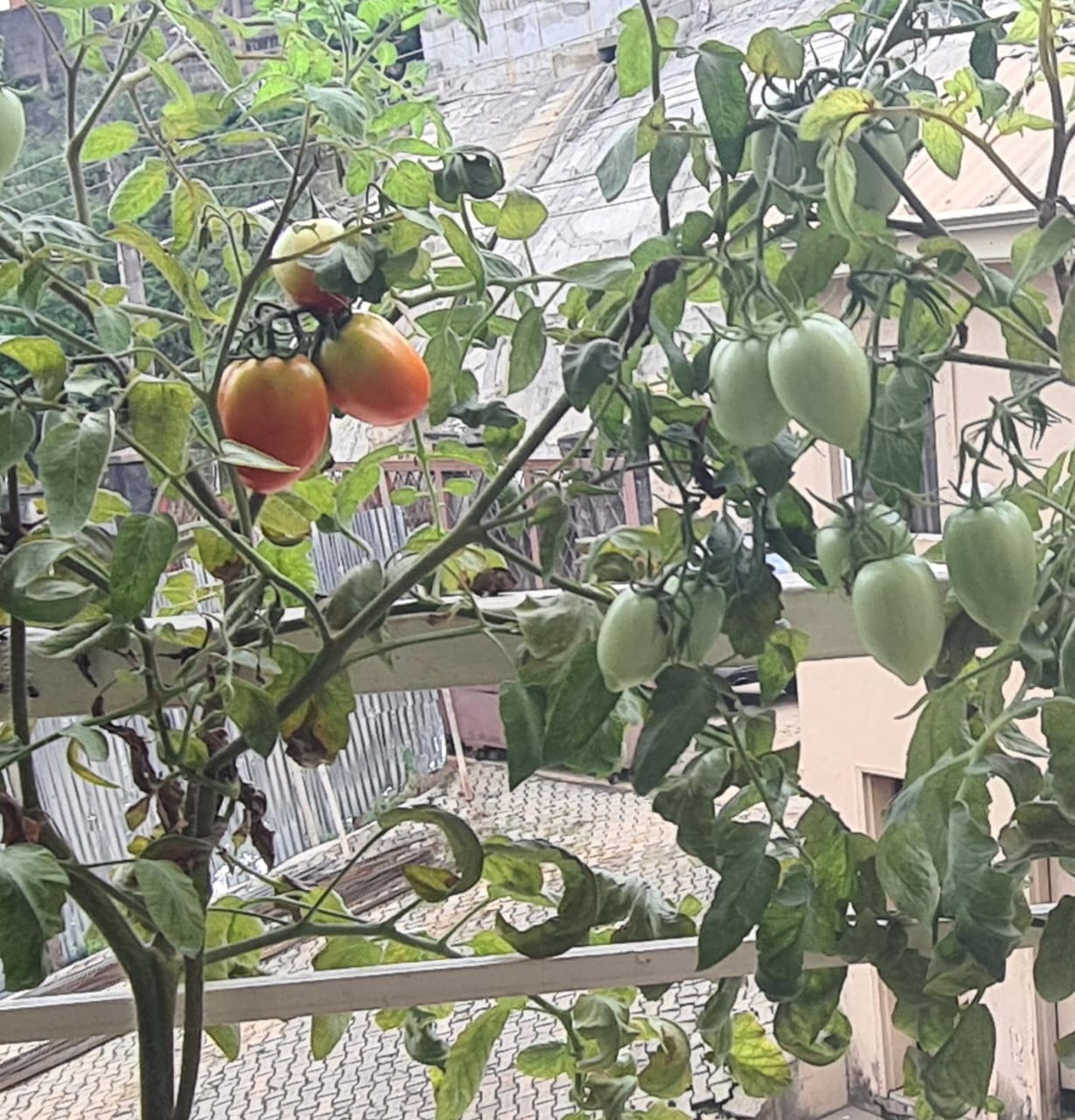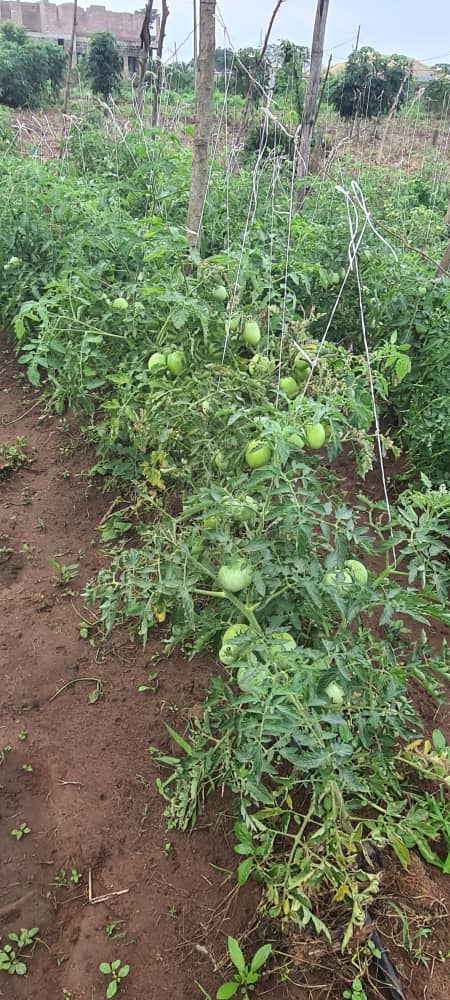Tomato flower abortion is a critical issue in open field cultivation, where environmental conditions are less controlled than in greenhouses. For tomato farmers in Nigeria and other African countries, flower abortion can severely reduce yields and profitability. In this article, we will explore why tomato flowers abort, the specific challenges of open field farming, and how to implement effective strategies to prevent and control this issue.
Understanding Tomato Flower Abortion in Open Field Cultivation
Flower abortion occurs when a tomato plant drops its flowers before they can develop into fruits. In open field cultivation, this issue is often exacerbated by extreme weather, poor soil conditions, and limited pest control options. The open environment exposes tomato plants to more stress factors, which can lead to flower abortion if not managed effectively.
Causes of Tomato Flower Abortion in Open Fields
- Temperature Fluctuations
In open fields, tomatoes are directly exposed to the elements. Daytime temperatures in many African regions can exceed 32°C, while nighttime temperatures might drop below 15°C. Such fluctuations can stress the plants, disrupting pollination and causing flower drop. High temperatures interfere with pollen viability, while low temperatures can inhibit pollen tube growth, both of which are critical for successful fruit set. - Nutrient Imbalances
Open field cultivation often involves varied soil types, many of which may lack essential nutrients like calcium, potassium, and phosphorus. Calcium deficiency can cause blossom-end rot, leading to flower and fruit drop, while potassium and phosphorus are crucial for flower development and fruit set. Without these nutrients, flowers fail to thrive and abort prematurely. - Water Stress
In open fields, tomato plants are subject to natural rainfall patterns, which can lead to both drought and waterlogging. Irregular watering can lead to inconsistent soil moisture levels, stressing the plants. Water stress impedes the plant’s ability to absorb nutrients, which in turn leads to flower abortion. - Pest and Disease Pressure
Open fields provide easy access for pests and pathogens. Common pests like thrips, aphids, and tomato hornworms can attack flowers, while diseases such as bacterial wilt and early blight weaken plants, making them prone to flower drop. Additionally, fungal diseases thrive in high humidity, which is common in many open fields after rainfall. - Poor Pollination
Tomatoes grown in open fields are reliant on wind and insects for pollination. However, unfavorable conditions like strong winds, heavy rain, or even excessive plant density can disrupt natural pollination. If pollination is incomplete, flowers will abort because they cannot develop into fruits.
Prevention and Control Strategies for Open Field Tomato Cultivation
- Temperature Management Techniques
- Shading and Row Orientation: Planting tomatoes in rows oriented north-south helps minimize heat stress by reducing direct sun exposure on leaves during the hottest part of the day. For areas prone to extreme heat, use shade cloth or temporary shading structures to shield plants during peak temperatures.
- Mulching: Apply organic mulch, such as straw or dried grass, to help retain soil moisture and moderate soil temperature. Mulch also prevents soil erosion and reduces weed growth, which competes with tomatoes for resources.
- Soil Testing and Fertilization
- Soil Amendments: Conduct soil tests to determine nutrient deficiencies, then amend the soil with compost, lime, or gypsum to balance pH and add calcium, potassium, and other essential nutrients.
- Fertilizer Schedule: Apply fertilizers based on soil test results. An N-P-K ratio of 5-10-10 is often recommended for tomatoes in open fields, with foliar sprays of calcium nitrate or potassium sulfate during flowering to boost flower retention and fruit set.
- Consistent Irrigation Practices
- Drip Irrigation: Consider using a drip irrigation system if feasible. This method provides steady, consistent moisture directly to the root zone, reducing the risk of water stress and minimizing the likelihood of waterborne diseases.
- Rainwater Harvesting: In regions where rainfall is inconsistent, rainwater harvesting systems can help capture and store water for use during dry periods. This ensures that plants receive adequate water and are not stressed by drought conditions.
- Integrated Pest Management (IPM) for Open Fields
- Biological Controls: Introduce beneficial insects such as ladybugs and parasitic wasps to control aphids and other harmful pests. Companion planting with basil or marigold can help repel certain pests naturally.
- Cultural Practices: Remove and destroy infected plant debris to prevent the spread of diseases. Rotate tomato crops with non-solanaceous crops like maize or beans to break pest and disease cycles.
- Natural Pesticides: Apply neem oil or garlic spray, which are effective against a variety of pests while being safer for beneficial insects and the environment.
- Enhancing Pollination in Open Fields
- Encouraging Pollinators: Plant wildflowers around the tomato field to attract bees and other pollinators. Avoid using pesticides during flowering, as these can deter or harm pollinators.
- Manual Pollination Assistance: If natural pollination is insufficient, gently shake plants in the morning to release pollen. Alternatively, use a small brush to transfer pollen manually from one flower to another, especially in dense fields where airflow is limited.

Extra Tips for Open Field Success in Tomato Cultivation
- Windbreaks: Erect windbreaks using tall plants or temporary fencing to protect tomato plants from strong winds, which can damage flowers and inhibit pollination.
- Staking and Pruning: Proper staking and pruning prevent the plants from becoming too bushy, improving airflow and reducing disease pressure. This practice also helps flowers receive more sunlight, which can aid in fruit formation.
- Timely Harvesting: Regularly harvest ripe tomatoes to reduce the plant’s energy expenditure on existing fruits, allowing it to focus on new flower and fruit production.
Final Thoughts
In open field tomato cultivation, flower abortion can seem challenging, but by implementing these strategies, farmers can significantly reduce the incidence of flower drop. These methods, combined with vigilant monitoring, can improve tomato yields, contributing to both food security and increased income for farmers in Nigeria and across Africa. For those invested in growing tomatoes, these preventative measures provide a practical roadmap to ensure that your tomato plants not only flower but also fruit abundantly.
By mastering these techniques, you can maximize your tomato yield and, ultimately, your profits. Investing time and resources into these prevention and control strategies is key to a thriving open field tomato farm.


